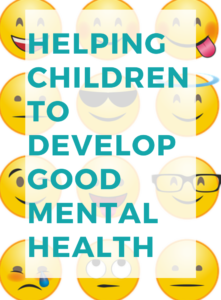
We are delighted to share this guest blog from Catherine Lynch of Planbee.com.
The global pandemic and lockdowns on top of all the usual life challenges can affect people in different ways. These changes can affect children just as much as adults and children might need support understanding how they are feeling and why.
Here are six stepping stones, and free downloadable resources, to help you support the children in your class develop good mental health.
1. Name emotions and feelings
Until someone has the vocabulary associated with emotions and feelings, they will not be able to explain how they feel or identify how others are feeling. Name emotions when a child experiences them, it might feel like you are stating the obvious, but you are giving them an important tool to support them becoming emotionally intelligent.
Photo Emotions Cards
Emoji Emotion Faces Cards
Synonym Booklet of Emotions
2. Explain the physical sensations linked to emotions and feelings
Help children to recognise how different emotions present in their bodies. Do they normally feel a bit sick when they are anxious? Do their shoulders feel tight when they are stressed? Do they become very busy when they are avoiding something? By helping them notice these physical representations of emotions they will begin to recognise when they are starting to feel something and they might be able to react before their brains get flooded with the stress hormone cortisol.
Design your own Emotion Emojis
Draw the Emotion
3. Understand when and why a feeling or emotion is felt
The better children become at naming and spotting their emotions the easier it will become for them to notice the triggers for their emotions. If they always get a knot in their stomach on the way to school and know it is because they feel anxious you can start to explore where the anxiety comes from. Are they worried about the moment of goodbye, is it walking into a formed group of people or is it something else? By pinpointing the cause of the feeling, you and the child will be able to understand it better.
Feelings Check-in Cards
Worry Monster Activity Sheets
Mood Tracker
4. Develop strategies to regulate emotions
When you and the children in your class are able to notice, name and understand the source of a feeling or emotion you can begin to work out ways to help them regulate. Is a big calming and focusing breath needed? Or maybe a few star jumps? There isn’t one route to regulating a child’s emotions, what works best for one specific child will be something you need to figure out together.
Meditation for Kids Guide
Mindfulness Colouring Sheets
5. Maintain boundaries to keep everyone safe
Rules that maintain safety should be non-negotiable. The rules will vary depending on the age and developmental stage of a child. When a child is feeling a big emotion, their brain will not be working in the same way it does when the child is calm. Expectations and language may need to be adjusted to help the child stay safe. Rather than seeing a rule as something that a child should be punished for breaking, work with them to help them succeed in staying safe and maintaining the boundary.
6. Relate with your child
Once the child has calmed down and are able to listen, empathise with them. Talk to them about a time you felt the same way and what happened. This will help them to understand their own feelings and feel like you understand and care about them.
Here are a few practical examples of the steps
Name, explain, understand, regulate, boundaries, relate
Excited
1. “I can see you are really excited.”
2. “You can’t stay still!”
3. “I am wondering if you are excited about playtime.”
4. “Take a deep breath with me.”
5. “I can see you are finding it tricky to stay walk inside. Stay next to me and we can help each other remember to walk.”
6. “One time I was so excited I had so much energy that I thought I might be able to fly.”
Angry
1. “I can see you are really angry.”
2. “Your face is scrunched up and your fists are clenched.”
3. “I am wondering if you are angry because someone didn’t let you play.”
4. “Take a deep breath with me.”
5. “I cannot let you hurt someone. If you need to get your angry out, try blowing away the clouds in the sky.”
6. “Once I was so angry, I wanted to throw everything I could see but my grandad helped me calm down by giving me play dough to squeeze.”
Sad
1. “I can see you are really sad.”
2. “Your eyes are hidden, and your shoulders are hunched.”
3. “I am wondering if you are sad because it is time to tidy up.”
4. “Would you like me to sit with you?”
5. “It is ok to feel sad. We need to tidy up now for home time.”
6. “I sometimes feel really sad about things ending too. Shall we make a time for you to continue working on this tomorrow.”
As the saying goes, you can’t pour from an empty cup, so make sure you are getting the support you need to help you support the people around you.
Bio:
Catherine Lynch is an experienced teacher, play therapist and senior manager at PlanBee. PlanBee creates teaching resources for primary school aged children (aged 5-11). The resources have been created to meet the English National Curriculum objectives.